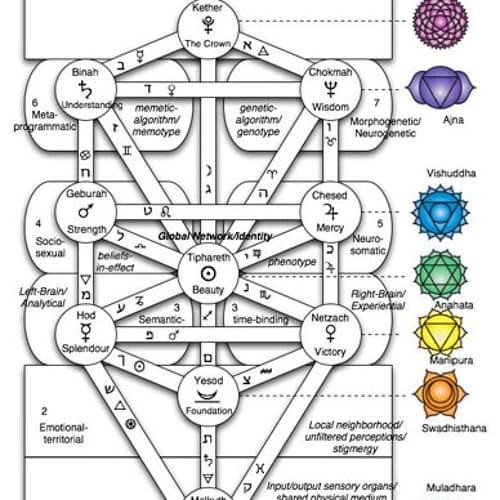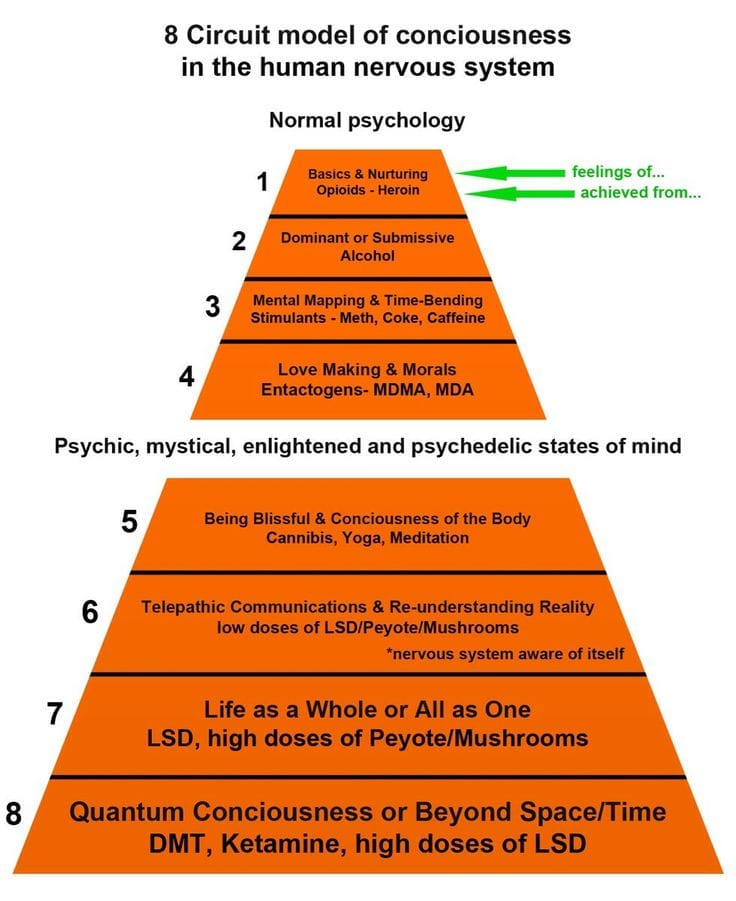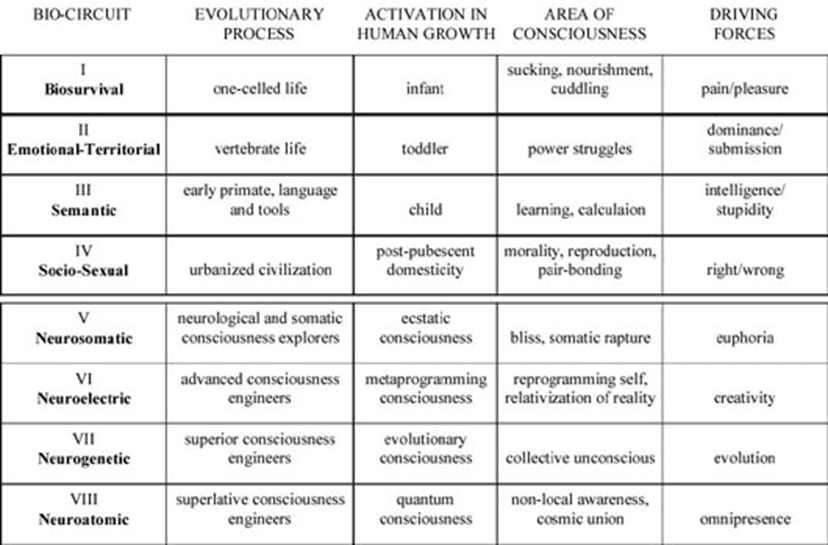
The 8 Circuits of Consciousness model, developed by Timothy Leary and expanded by Robert Anton Wilson, describes human consciousness in eight progressive stages. Each circuit unlocks a new level of perception, intelligence, and experience. Let’s explore these circuits and the substances associated with each. There is slightly different versions of this model placing different substances in slightly different positions as in the following image.

1. The Bio-Survival Circuit (Safety and Survival)
This circuit governs our most basic instincts: survival, food, and safety. It activates in infancy when we learn to trust or fear our environment. People stuck in this circuit live in constant fear or aggression.
- Corresponding Drug: Opiates (e.g., heroin, morphine) – These substances provide a deep sense of comfort and safety, mimicking the warmth of a mother’s embrace.
2. The Emotional-Territorial Circuit (Dominance and Submission)
This circuit controls social hierarchy, power struggles, and territorial instincts. It manifests as aggression, pride, or submission.
- Corresponding Drug: Alcohol – It lowers inhibitions, enhances confidence, and amplifies dominance or submission tendencies.
3. The Symbolic-Reasoning Circuit (Logic and Language)
This circuit enables logical thinking, problem-solving, and communication. It emerged when humans developed language and abstract thought.
- Corresponding Drug: Caffeine – It sharpens focus, enhances analytical thinking, and boosts productivity.
4. The Socio-Sexual Circuit (Morality and Socialization)
This circuit controls sexual behavior, cultural values, and group bonding. It governs our ability to fit into society and develop relationships.
- Corresponding Drug: MDMA (Ecstasy) – It enhances empathy, emotional openness, and social bonding.
5. The Neurosomatic Circuit (Sensory Expansion and Bliss)
This circuit shifts perception beyond ordinary reality, unlocking heightened awareness, body-mind integration, and ecstasy.
- Corresponding Drug: Cannabis – It alters sensory perception, induces relaxation, and expands awareness of bodily sensations.
6. The Neuroelectric Circuit (Psychedelic and Transcendental States)
This circuit activates higher intelligence, telepathic experiences, and deep intuition. It connects individuals to deeper realities beyond the five senses.
- Corresponding Drug: LSD – It expands consciousness, breaks linear thinking, and facilitates mystical experiences.
7. The Neurogenetic Circuit (DNA and Ancestral Awareness)
This circuit taps into genetic memory, past-life experiences, and the collective unconscious. It allows individuals to experience knowledge beyond personal memory.
- Corresponding Drug: DMT – It induces profound mystical experiences and visions beyond time and space.
8. The Quantum-Nonlocal Circuit (Cosmic Consciousness)
This circuit transcends space-time, offering access to infinite awareness and universal intelligence. It dissolves the ego and connects individuals to the cosmos.
- Corresponding Drug: Ketamine – It provides dissociative, out-of-body experiences, and a sense of unity with the universe.
Conclusion
The 8 Circuits of Consciousness offer a map of human potential, guiding individuals from basic survival instincts to cosmic awareness. While substances can act as shortcuts to these states, true mastery comes from conscious development through meditation, learning, and self-awareness.
Unlocking these circuits consciously allows for a more profound, balanced, and enriched human experience.


